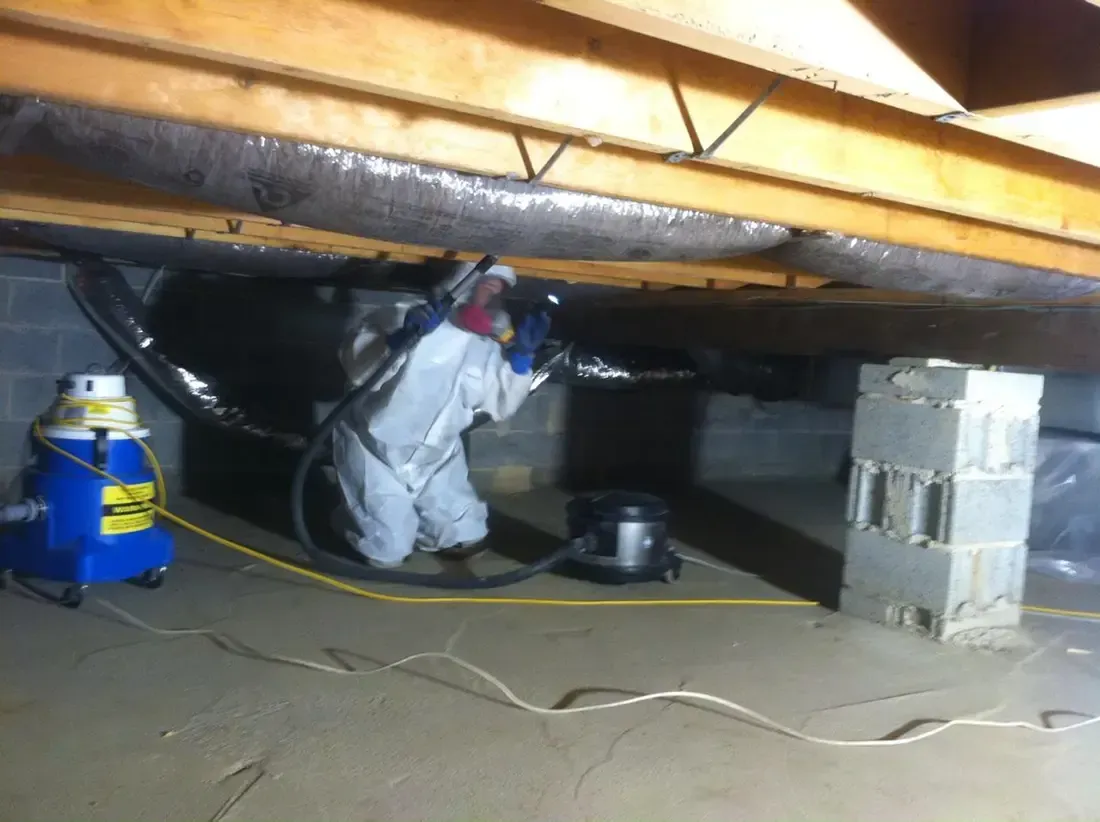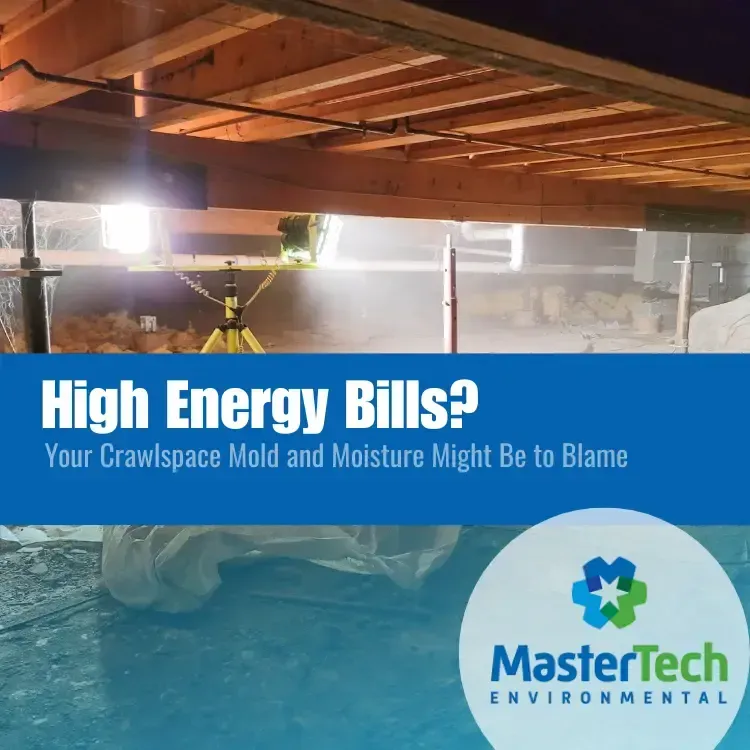Structural Risks and Health Concerns of Untreated Crawlspace Mold in Myrtle Beach Homes

Homeowners in Myrtle Beach often underestimate the seriousness of mold growth in their crawl spaces, viewing it as an annoyance rather than a genuine threat. The truth, however, is that untreated crawlspace mold can lead directly to significant structural damage, attract damaging pests, and degrade indoor air quality. Given the humid coastal climate of Myrtle Beach, mold and moisture in crawlspaces are more than just common—they can pose severe, long-term problems.
Addressing crawlspace mold promptly isn't merely good home maintenance—it's a critical step in safeguarding your home's structural integrity and your family's health. Here's what Myrtle Beach residents need to know about the hidden dangers of crawlspace mold and why taking immediate action is crucial.
Structural Damage from Mold-Related Wood Decay
When crawlspace framing elements, such as floor joists, girders, and subflooring, remain consistently damp, it sets the stage for severe wood rot. South Carolina's building standards clearly define any wood with a moisture content of 20% or above as excessive and requiring immediate attention. Once moisture in wood reaches around 28%, wood-destroying fungi become active, rapidly deteriorating structural elements.
In Myrtle Beach's humid climate, these moisture levels can be easily exceeded, especially in crawlspaces that lack proper drainage, ventilation, or vapor barriers. Homes near the coast, already exposed to high humidity and frequent rains, are particularly susceptible to rapid mold growth and rot. Signs of structural deterioration from crawlspace moisture include:
· Sagging, uneven, or bouncy floors.
· Visible warping or discoloration of floorboards.
· Wood that feels soft or crumbly when touched.
In extreme cases, a particularly aggressive fungus known as Poria may develop. This fungus actively transports moisture through wood, significantly accelerating the process of rot and decay. Homes affected by Poria or severe mold-induced rot often face structural instability, requiring extensive and costly repairs. Unchecked mold damage can lead to thousands of dollars in repair costs, especially if structural wood must be entirely replaced.
Termite and Pest Infestations Linked to Damp Crawlspaces
High moisture and mold growth in crawlspaces do more than rot structural wood—they also create an ideal environment for pests. Horry County, including Myrtle Beach, is classified by South Carolina as a "very heavy" termite infestation zone. Termites are naturally attracted to damp, softened wood, and wet crawlspaces provide precisely the conditions they need to thrive.
As mold breaks down wood fibers, termites can more easily invade and cause additional damage. Furthermore, other pests such as cockroaches, camel crickets, and rodents frequently infest damp, moldy crawlspaces. These pests not only cause physical damage—like chewing insulation and electrical wires—but also introduce allergens and contaminants into the home.
If your crawlspace is damp and moldy, it's likely that you're also inviting pests. Once pests establish themselves, controlling the infestation becomes increasingly challenging. Thus, addressing moisture and mold issues proactively is crucial for keeping pests out of your home.
Health Risks from Crawlspace Mold Exposure
Beyond structural and pest-related concerns, mold in a crawlspace has a significant impact on the health of those living inside. Studies consistently indicate that up to 50% of the air in the living areas above a crawlspace originates from the crawlspace itself. This occurs because warm air rises through tiny gaps and openings—a phenomenon known as the "stack effect"—pulling spores and musty odors upward into the home.
Inhaling mold spores causes various health issues, particularly for individuals who are sensitive or vulnerable. According to the CDC and the South Carolina Department of Health, common health symptoms related to indoor mold exposure include:
· Nasal congestion and sinus discomfort.
· Eye, throat, and skin irritation.
· Chronic coughing or wheezing, especially in asthma sufferers.
· Increased frequency or severity of allergy symptoms.
In Myrtle Beach, where mild temperatures allow mold growth to persist year-round, the risk of chronic health issues due to mold exposure is significantly higher. Persistent musty odors, especially noticeable after rainstorms, are strong indicators that mold in your crawlspace is negatively affecting your indoor air quality.
While toxic molds, such as Stachybotrys (commonly known as "black mold"), are less frequent in crawlspaces, they can occur in prolonged damp conditions. Such molds pose heightened risks, particularly to individuals with compromised immune systems or existing respiratory problems.
Why Immediate Remediation is Critical for Myrtle Beach Homeowners
In South Carolina, there are no specific state or federal regulations that set "safe" mold levels. This lack of formal guidelines means homeowners carry the responsibility for ensuring their indoor environments are mold-free and safe. Ignoring mold and moisture problems doesn't just lead to structural and pest-related issues—it can seriously impact your family's health and quality of life.
Effective mold remediation involves more than cleaning surfaces; it requires addressing the underlying moisture issues to prevent recurrence. For Myrtle Beach residents, this typically means:
· Installing a comprehensive vapor barrier to prevent soil moisture infiltration.
· Improving crawlspace drainage to avoid water accumulation.
· Considering crawlspace encapsulation, which has been proven highly effective in humid coastal climates.
· Using dehumidification to control humidity levels, maintaining them below 60% actively.
Taking the First Step: Professional Crawlspace Mold Inspection
If you suspect mold or have signs of crawlspace moisture, it's essential to act swiftly. At MasterTech Environmental, we specialize in thorough, detailed crawlspace mold inspections. Our certified mold inspectors evaluate not just visible mold but also hidden moisture sources and conditions that allow mold to flourish. Our process includes:
· Detailed visual assessments of the crawlspace structure.
· Moisture mapping to pinpoint specific problem areas.
· Thermal imaging to uncover hidden dampness or mold colonies.
· Professional air and surface mold testing conducted by accredited laboratories.
After inspection, you'll receive clear, actionable recommendations for mold remediation that are explicitly tailored to your home's specific situation. Prompt remediation protects your home from structural damage, reduces pest infestations, and safeguards your family's health.
Taking mold in your crawlspace seriously is not an overreaction—it's necessary preventative maintenance, especially in the mold-friendly climate of Myrtle Beach. By understanding the structural and health dangers of untreated crawlspace mold, you can take the proactive steps necessary to keep your home safe, sturdy, and healthy for years to come.



